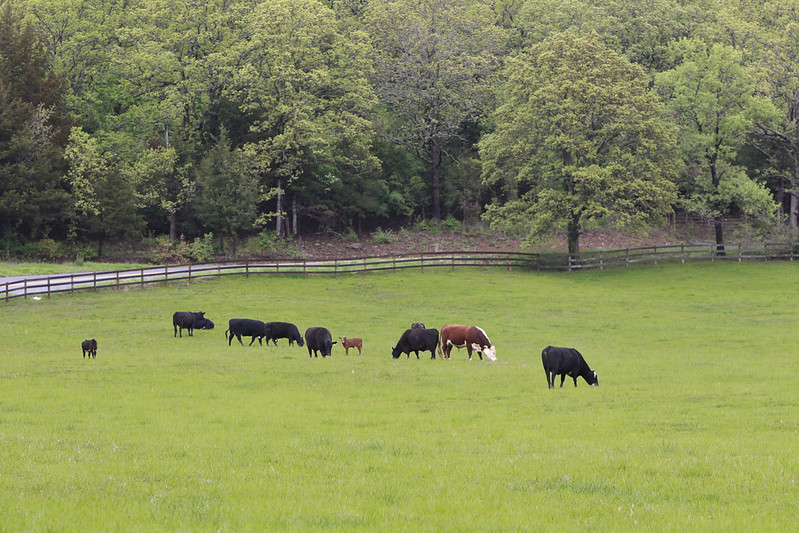Are urea fertilizer additives worth the cost for forages?
April 6, 2022
By Mary Hightower
U of A System Division of Agriculture
Fast facts
- High costs forcing producers to weigh fertilizer options
- Loss of nitrogen through rain, volatilization are decision factors
(320 words)
(newsrooms: with file art of cattle grazing https://flic.kr/p/ehmqiU )
LITTLE ROCK — The record high costs of fertilizer are prompting hay and forage growers
to look at all their options, including whether to use urea or ammonium nitrate and
whether a urea additive will help.
“Urea is becoming the dominant nitrogen fertilizer because of increased regulations and higher costs associated with ammonium nitrate,” said John Jennings, professor and extension forage specialist, for the University of Arkansas System Division of Agriculture. “However, the decision of whether urea is the best nitrogen choice is not without question.”

Jennings said that in spring when soil temperatures are cool, urea fertilizer will give the same forage yield response as ammonium nitrate when applied at the same rate of nitrogen per acre.
“The myth persists that nitrogen from urea will be lost from volatilization when applied during summer,” he said. “Past and recent forage fertility research has shown that urea can be as effective as ammonium nitrate as a nitrogen source for bermudagrass when applied at the same nitrogen rates.”
Jennings said if urea is incorporated into the soil by rainfall within several days after application, nitrogen losses are minimal.
In recent years, additives such as NBPT — the active ingredient in nitrogen stabilizer Agrotain — has been added to urea fertilizer to reduce nitrogen losses by inhibiting the action of the enzyme urease in soil. Urease causes volatilization of ammonia from urea fertilizer. NBPT has been shown to effectively reduce nitrogen losses from urea in row crop fields.
“However, several research studies in Arkansas have shown that NBPT added to urea fertilizer did not increase forage dry matter of bermudagrass compared to urea alone,” Jennings said. “Thus, the added cost of NBPT may not be necessary when using urea for forages. Producers should consider all information when making forage fertilization decisions.”
Find additional resources for livestock and forages at the Cooperative Extension Service website.
Mention of product names does not imply endorsement by the University of Arkansas System Division of Agriculture.
To learn more about Division of Agriculture research, visit the Arkansas Agricultural
Experiment Station website: https://aaes.uark.edu. Follow on Twitter at @ArkAgResearch.
To learn more about the Division of Agriculture, visit https://uada.edu/. Follow us on Twitter at @AgInArk.
To learn about extension programs in Arkansas, contact your local Cooperative Extension
Service agent or visit www.uaex.uada.edu.
About the Division of Agriculture
The University of Arkansas System Division of Agriculture’s mission is to strengthen
agriculture, communities, and families by connecting trusted research to the adoption
of best practices. Through the Agricultural Experiment Station and the Cooperative
Extension Service, the Division of Agriculture conducts research and extension work
within the nation’s historic land grant education system.
The Division of Agriculture is one of 20 entities within the University of Arkansas System. It has offices in all 75 counties in Arkansas and faculty on five system campuses.
Pursuant to 7 CFR § 15.3, the University of Arkansas System Division of Agriculture offers all its Extension and Research programs and services (including employment) without regard to race, color, sex, national origin, religion, age, disability, marital or veteran status, genetic information, sexual preference, pregnancy or any other legally protected status, and is an equal opportunity institution.
# # #
Media contact: Mary Hightower
mhightower@uada.edu